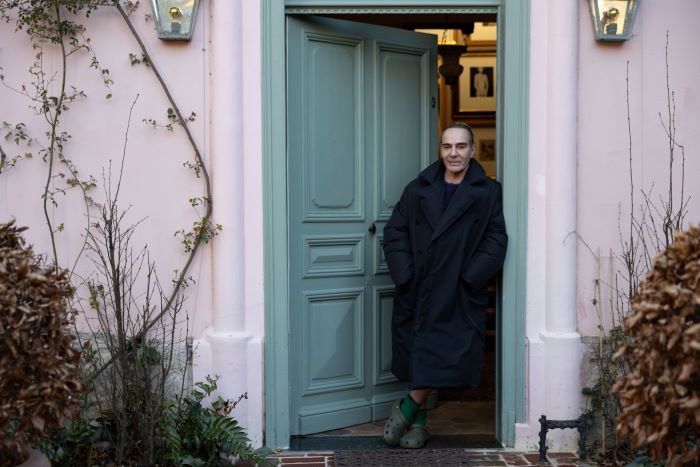The latest film by Kevin Macdonald (an Academy Award winner for One Day in September), on the innovative, influential British fashion designer John Galliano, is a curious construction. Documentaries often pitch themselves on one side of an argument over another. Furthermore, fashion and art documentaries are usually somewhat cozy, reveling in visually pleasing aesthetics. Ultimately, akin to Bob Fosse’s All That Jazz, the result is ambivalent in its portrayal of its subject and somewhat removed in its depiction of his art and industry.
Much of the film concentrates upon Galliano’s insidious, anti-Semitic comments against a group of women at an outdoor Parisian café that was caught on a camera phone in 2010 that went viral in 2011 right before Paris Fashion Week. The comments themselves are awful, but the venomous, coldhearted conviction in which he lays them out are acutely difficult to behold.
The film begins and ends unsettled, the incident overriding runway footage and the fawning heaps of praise luminaries (Anna Wintour, Kate Moss, and Naomi Campbell among them) bequeath upon him throughout. There were other hate speech incidents within the same time frame not caught on video. In comparison to these racist verbal attacks, a collection inspired by Charlie Chaplin and the homeless in France comes off like a misguided faux pas.
Galliano, regretful, blames the filmed outburst on drugs and alcohol—many here describe him as having two sides: normally shy and going “mad” under the influence—and the tremendous stress he was under with deadlines, crafting so many detailed and sweeping collections, and the loss of a close friend and colleague, Steve Robinson. The documentary itself seems to align with this excuse as well, building toward Galliano’s downfall with dizzying speed. (The footage rarely lingers upon details of his collections.)
The film also follows Galliano’s life from his childhood in a very modest and, in his words, “grey, grey, grey” neighborhood, where he was physically abused by his father. Galliano’s attention-grabbing behavior and meticulous eye for lines and clothing were apparent early on. He would feverishly escape in his craft of drawing and designing. Later, he’d experience a quick rise from Thatcher-era Saint Martin’s School of Art to his first collections. His debut fashion show in 1985 was wild, punky, and vibrant. Despite the critical success of his flashy collections, a tension would lie sometimes between the wearability and economic viability of the clothes. Still, he would become an iconic workhorse designer throughout the decades and an integral figure in boosting careers of supermodels, particularly Moss (her stories of her first runaways under Galliano’s direction are electric). He’d also find homes at both Givenchy and Dior—it seems unimaginable that he was able to create distinctive lines of designs for those houses and his own line all at once.
Interspersed throughout are excerpts from Abel Gance’s 1927 Napoléon. The silent epic and its French revolutionary fashions were particularly influential on Galliano’s sense of grandeur and style. Macdonald visually depicts, with cuts between the filmic Napoléon and Galliano dressed as the French emperor, Galliano as an egomaniac. Also referenced is Michael Powell and Emeric Pressburger’s The Red Shoes, a perfect and splashy cinematic compliment to Galliano’s creative and perfectionist madness. (Macdonald is the grandson of Pressburger.)
The film’s title specifically emerges as a description of how he mixes materials (cheap sweatshirts with high end items) and also ends up relaying Galliano’s meteoric rise and his crashing downfall, as well as the giddy creative highs he experiences and the plummet of adrenaline and emotions after the end of his runway shows.
Where the film becomes more ambivalent is toward the denouement when Galliano, so expressive in Macdonald’s interviews previously, suddenly gives halting, evasive responses to his victims and the incidents in question: He claims he doesn’t remember much. The film also seems somewhat judgmental toward the industry, which after collectively denouncing him, begins to embrace him not long after, including help from incredibly powerful people like Jonathan Newhouse. (Galliano is currently the creative director at Maison Margiela.) One talking head, Robin Givhan, the fashion editor of the Washington Post, notes, “I wasn’t particularly surprised he’d come back that quickly,” adding, “He’s a white man.”

















Leave A Comment